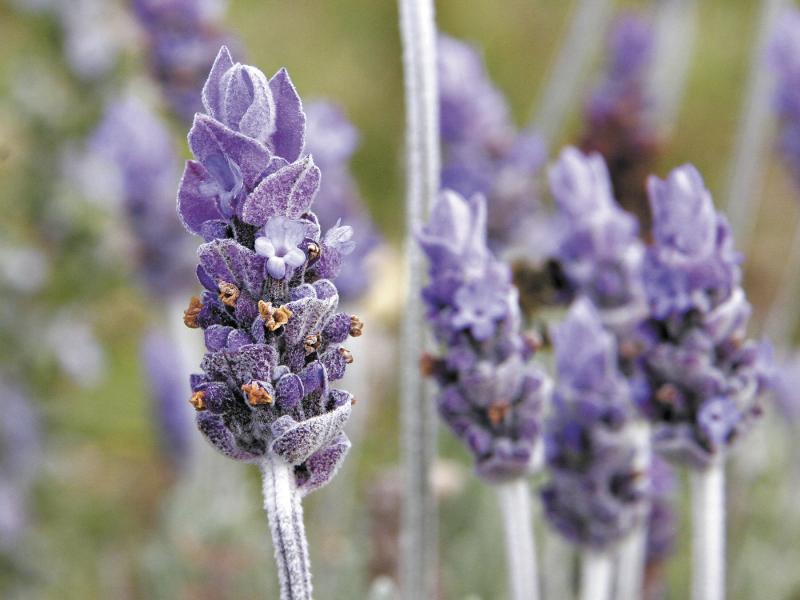Winter can be a quiet time in the garden, and yet one that is fully alive. Let dead flowers and perennials provide winter habitat and food for all sorts of birds, animals, and even insects while giving the winter garden interest. Choose flowers that grow to different heights to create a multi-level garden that attracts birds. By stacking different heights and shapes, you not only create a more pleasing visual landscape, but offer better cover for birds and small animals.
Toward the end of summer, stop cutting flowers (deadheading) so that the plants can go to seed. Also, never use pesticides or herbicides on flowers that you intend to leave over the winter. Often these chemicals are toxic to birds and small animals. Choose plants that develop unusual withered leaves, dried flower heads, seedpods and even fallen flower petals.
Globe thistle (Echinops ritro), Lavender, Asters and Verbena bonariensis also provide winter seed for birds. Include ornamental grasses that will produce copious amounts of seeds. Clumps of ornamental grasses can serve as accents or markers. The dried foliage of Little Bluestem (Schizachyrium scoparium) will burst into deep crimson and pink. Maiden Grass (Miscanthus spp.) looks especially soothing when planted in drifts, and the buff stems and leaves make a nice accent to any snowfall.
Asters bloom late in the season, often stopping only when killed by frost. Their seed provides food for a wide range of birds, including sparrows and finches. Let the flowers fade and die in place so they form seedheads. By planting perennial asters, you can have a colorful flower garden and an interesting winterscape. These American natives are usually hardy in USDA zones 3-9.
Another daisy-like flower with edible seeds is the Rudbeckia, which will naturalize easily. Its huge flowers bloom in shades of brown, yellow, gold, red, and even green. While in bloom, they attract butterflies, bees and other pollinators to the garden. Once the seedheads form, they can be left all winter to feed the birds.
Salvia (Salvia nemorosa) with its muted tones of light blue fading to purple offers months of winter garden interest. The herb clary sage (Salvia sclarea), whose large stems and leaves fade to a shimmering silver in the fall will delight you for months.
Let your perennials stand uncut throughout the winter, and you will attract birds and small animals to the garden. Goldfinches, house finches and purple finches all feast on the seedheads of coneflowers (Echinacea). After the daisy-like flowers fade, the seedheads form. Because coneflowers are native, they are almost indestructible. They also readily self-seed and will naturalize in meadows and roadsides. Coneflowers are hardy in USDA zones 2-10.
Many seedpods are beautiful in their own right. Old Man’s Beard (Clematis vitalba) has big, fluffy, white seedheads that are more interesting than the actual flowers. Siberian iris (Iris sibirica) forms unusual vase-shaped seedpods that split open to reveal ebony-black seeds. The money plant or honesty (Lunaria annua) is all about its silver-dollar-shaped translucent seedpods that will last until spring. The common milkweed (Asclepias syriaca) forms boatlike hulls with wispy cotton puffs attached like parachutes to the seeds.
Gardeners can feel more connected when we embrace the whole cycle of life from seed to bloom to fruit to seed. So rather than pull up or cut down your garden, leave some plants to provide shelter and food for winter, and often a beautiful array of seedpods. You may find that as with all life, you achieve more by letting your plants die as beautifully as they lived.




















































